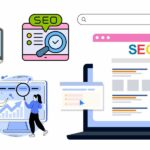While it’s true that a sale is the ultimate goal, leads have grown to be much more than just prospective customers. With the development of digital marketing and the various improvements in technology, leads have become synonymous with information. When grouped together in large numbers, leads become data and can help shape marketing strategies and activities for greater reach.
What is Lead Generation?
Just as in the past, a lead in digital marketing is someone who has expressed interest in your product or service. How we generate those leads, however, has changed with digital marketing. There are several ways to generate leads with digital marketing, through both inbound marketing and paid media strategies.
Essentially, any marketing activity where your goal is to capture organic data (name, address, phone, email) is part of a lead generation campaign. Whether it’s an advertisement, social media post, blog post, landing page, email message, pay-per-click campaign, banner ad, or pop-up funnel. In most cases, the less information you require, the more likely you are to achieve organic data capture, particularly with your first media touch. As buyers become more interested in the products or services you sell, they’re more likely to part with additional information. A key note is that often, it will take multiple impressions of your brands products/services before someone gives you their info.
How Leads Factor into the Buyer’s Journey
A standard buyer’s journey consists of four basic steps: awareness, consideration, decision, and delight. The delight step, of course, is to ensure a customer returns for future purchases and tells a friend. In almost every case, a lead enters the buyer’s journey at the awareness phase. They have likely felt a need for some time and have recently discovered your company can somehow solve that need.
The length of the buyer’s journey varies according to industry and even customer. Some industries experience very lengthy buyers’ journeys, particularly those with high price levels. Some industries, especially retail, see very short journeys, where a buyer discovers, decides, and buys within moments.
While the buyer’s journey is important to understand for the purposes of making the sale, it’s also the period where you learn the most about your buyers’ behaviors. What you learn about your buyers’ behaviors can help you shape your marketing strategies to attract more, convince faster, and create loyal customers for life.
What Your Leads Teach You
The first thing you learn about the people who express interest in your company are basic demographics: gender identity, income levels, geographic locations, relationship status, and more. When you analyze the collected data, you can learn psychographic information, such as what motivates them to make a purchase, what their interests and hobbies are, how various personalities react to your marketing messaging, and what makes them feel important enough to become loyal buyers.
As you can see, lead generation is a crucial part of marketing, because without leads, you won’t learn what makes your buyers tick. And if you don’t know what makes your buyers, well…buy, then you’ll always be several steps behind your competitors.
If you’d like to explore lead generation strategies so that you can learn from your buyers, reach out. Let’s start a conversation today!




